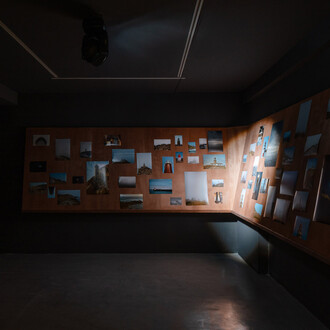When we speak of the world as the “environment” we are referring (etymologically and otherwise) to that which is around us, to what we also call our ‘surroundings’(1). But there is a fallacy in such thinking. Yes, things may turn, but do they really turn around us? Or by extension, are we really at the center of something — indeed, of everything? And most crucially, are we separate from anything, as such logic suggests? Of course not. Yet how useful such thinking has been! For from it — and in particular the implication of separateness — has sprung, for better or worse, nearly all (or perhaps all) that mankind has ever done on and to this earth other than survive and procreate — an immeasurably vast set of acts and artifacts that by definition includes art. For what is art, if not a kind of essential distancing, a way of seeing things at a remove and across a separation, so as to arrive at a way of seeing? Understanding, as Rilke understood, requires an element of its opposite.
Historically, this has been particularly palpable in depictions of landscape, regardless of era or medium or style or what that depicted landscape might have consisted of; to capture the world has at some level involved establishing a psychological distance from and barrier to it. It continues to be so today, even as the landscape in our Anthropocene Age is quite literally (and catastrophically) changing before our eyes, as human-driven processes of transformation usher us into an ominous but as yet mostly unknown new phase. And as such it is strikingly evident in the exhibition Poetics of Landscape: Alejandro Campins, Andreas Eriksson and Marina Rheingantz at the Galería Elba Benítez.
The painters participating in Poetics of Landscape come from starkly distinct geographical backgrounds and frames of reference: Campins from the quintessentially Caribbean crucible of Havana; Eriksson from remote, lakeside, pine-forested Sweden; and Rheingantz from the rural and urban dichotomy that characterizes her native Brazil. All, however, have developed practices based on depictions of their “environments” in an expanded sense — depictions that combine in varying degrees figuration and abstraction, the real and the imaginary, the built and the unbuilt, the utopic and the dystopic.
More saliently, these depictions share an abiding sense of strangeness — or rather, of estrangement. This quality is expressed in different tones and registers in their respective aesthetics — Campins in a stolidity and stillness that verge on the otherworldly, Eriksson in an organic viscosity, and Rheingantz in a volatile, almost kinetic instability. But there is an opacity, both literal and poetic, to all these paintings, a paradoxical embrace of distance and embodiment of otherness. In other words (and with a nod to the conceptual underpinnings of this work), in these paintings landscape, like language, is not transparent — and is all the more powerful for not being so. Or, again citing Rilke: “To see landscape thus, as something distant and foreign, something remote and without allure, something entirely self-contained, [is] essential if it [is] ever to be a medium and an inspiration for an autonomous art.”
















